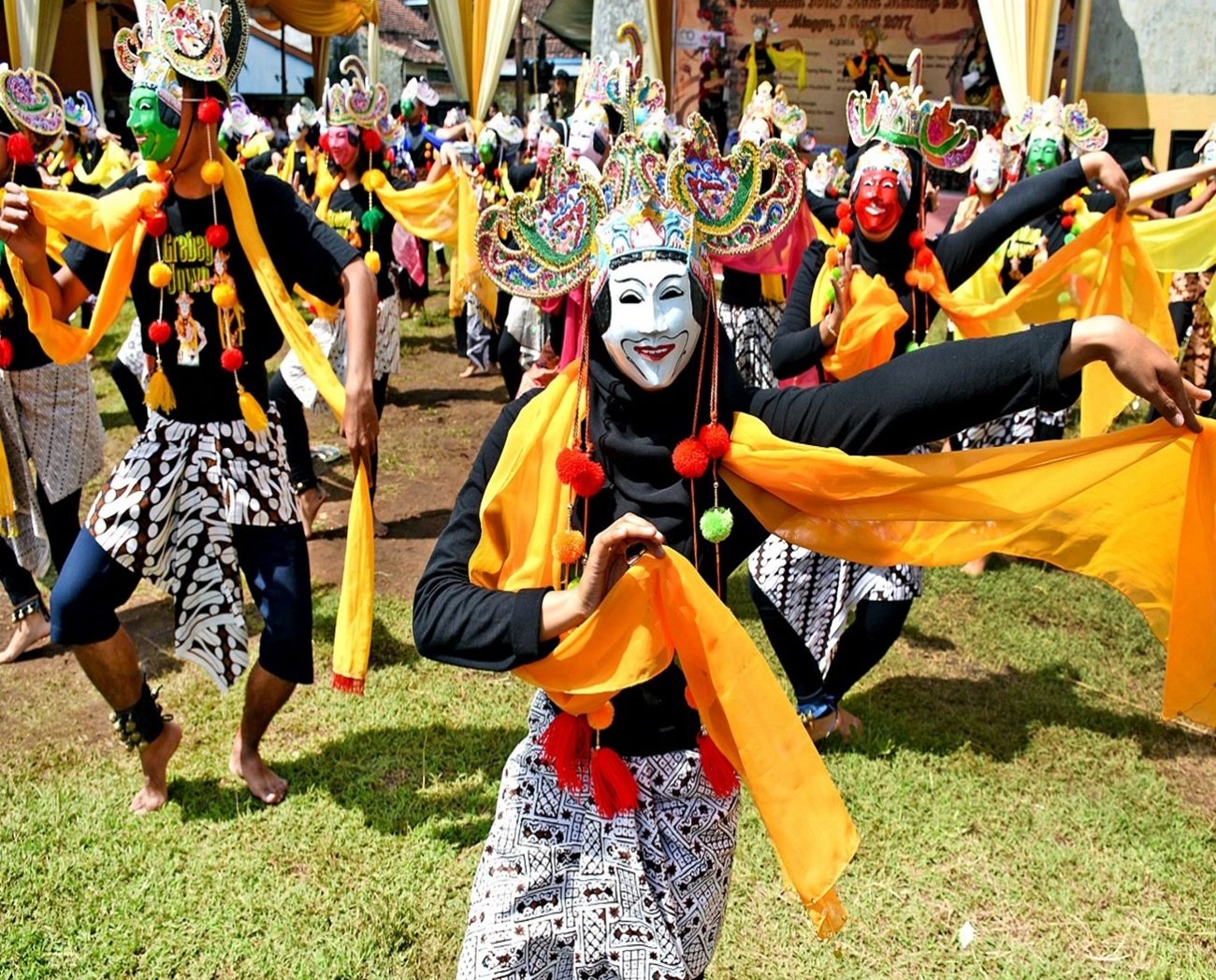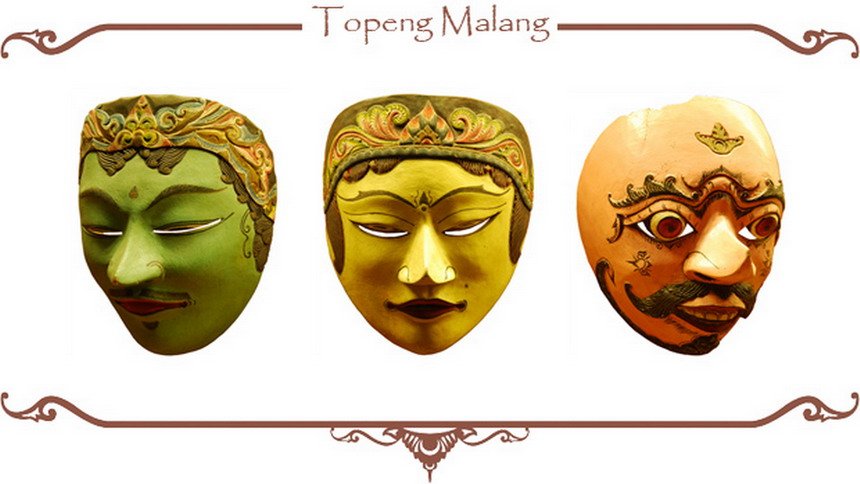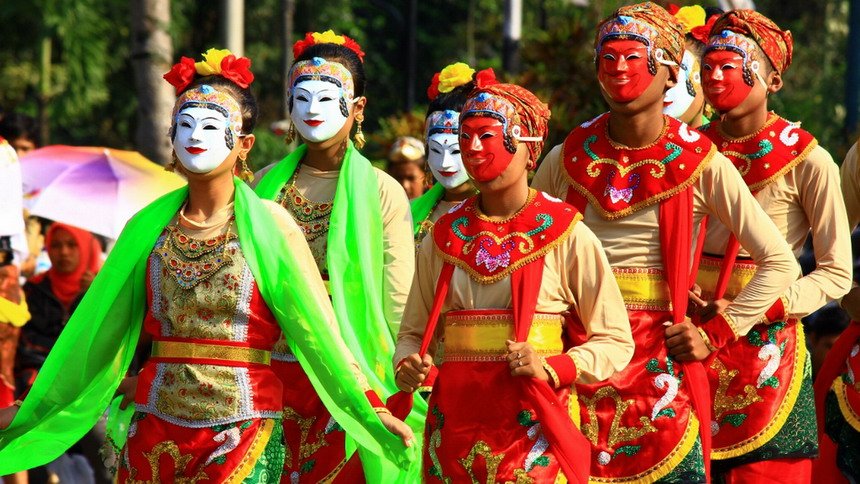
Art & Culture of Malang City
Mask of Malang
Mask (topeng) as a product of fine arts is not only used as decoration, but also as the equipment of dance and theatre in some performances. In Malang, to be exact in the Kedung Monggo village, Pakisaji sub-distric and in the Jabung village, Tumpang sub-distric, lots of Topeng are made to use for the performance of an opera or “wayang topeng”.
The mask of Malang (topeng Malang) has special characteristics, such as their thick wood of randu wood (capok tree) or “cangkring”, which is rather dark in colour, with a carving on the forehead which is specially bulging, fashioned with a square chin and high cheek- bones. Some mask needs some ritual to make the carving mask has a magic power.

Decoratively, Malang masks are unique. They are different from any other mask art found in Java. There are five typical colurs used to deco rate the masks. The red colour symbolizes courage, the black colour symbolizes determined ambitions, the yellow colour symbolizes wisdom, the white colour indicates purified character and the green colour indicates peace.
The form of its throne and the expression of the mask especially the construction of “gelung” and “janang” and the eyes are not far different with the thrones of wayang on the relief of Jajagu temple. This is not surprising since the Jabung is located near Jajagu temple.

Malang Mask Dance
Malang is famous for its dances. The topeng performance has a strong dramatic value, its performance pattern is good, while the garment music have special characteristics. The carving mask usually made to be used in an opera or “wayang topeng”. What is interesting about the mask dance is that all the dancers representing some characters wear masks.
The art of Mask Dance from Malang, East Java, is the result of a combination of cultures of Central Java, West Java and East Java (Balambangan and Osing). So that the roots of the dance movement contains elements dynamic wealth and ethnic music from Java, Madura and Bali. Nevertheless, the mask dance it is estimated that only appear in the early 20 ‘s and flourished during the war for independence. This dance is a metaphor for human nature, so many models that describe the situation of the mask and different conditions, such as: cry, laugh, sad, confused, and so on. This dance is usually displayed in the fragmentation of local folk tales and stories about different things, especially stories about banner.
Walikan Language
Walikan language is created by Indonesian Patriot called Gerilya Rakyat Kota (GRK). This special language is considered as important language in warfare for ensuring the confidentiality, effectiveness of communication among militants as well as identification for comrades or adversaries.
In the colonial era, there are so many Dutch militants who become spies in Malang area. These spies are able to communicate using local language so that they can get information easily from GRK.
At that time, a patriot called Suyudi Raharno had an idea for making a new language between Malang militants. Then, that language became their identities while maintaning the information security. This language only had one way characteristic in pronunciation and writing. That is reversing from the back of the next read.
Now, that language is known as walikan language. For example : Ayo arek malang kabeh(javanese) becomes Ayo kera ngalam hebak (walikan language).

